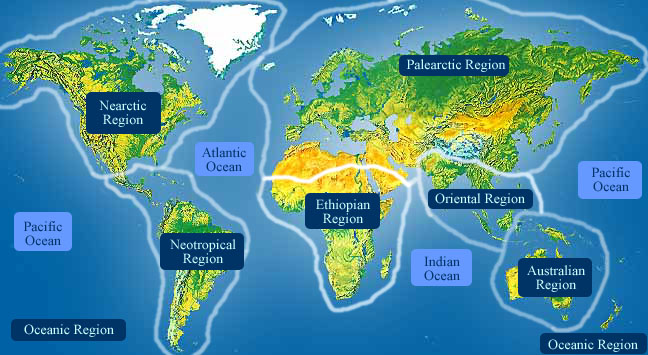Hemaris thysbe
Geographic Range
Hemaris thysbe may be found as far north as Alaska and the Northwest Territories. In the continental United States, Hemaris thysbe they occur west to Oregon. They are most common in the eastern part of the United States, and as far south as Florida and Texas. (Lawrence, 1999)
Habitat
The most common habitats for Hemaris thysbe include cultivated flower gardens, meadows, and forest edges. Hummingbird moths can fly long distances and are migratory. Only a few are able to cross desert regions because the scarcity of food and water. Their flight period is from May to September. (Holzberg, 1999)
- Terrestrial Biomes
- forest
Physical Description
The average wing span of hummingbird moths range from 4 to 5.5 cm. In adults, the wings are initially dark red to almost black. After their first flight however, some of the scales fall off, leaving clear spots with no scales. Thus, the wings are typically clear with a reddish to brown color border. The forewing cell has a medial row of scales and a dark margin. The body is spindle shaped and varies in color from olive green to reddish-brown. These moths lack the tympana possessed by most other moths. Their antennae are thickened from the base outward, usually to the middle only, and curved at the end. The larva are yellowish-green with darker green lines and reddish brown to dark brown.
(Struttmann, 1999)
- Other Physical Features
- ectothermic
- bilateral symmetry
-
- Average mass
- 3 g
- 0.11 oz
Reproduction
During winter, the larvae burrow in the soil and overwinter as hard-shelled, brown pupae. In May or June, hummingbird moths emerge from the pupae. They then deposit spherical green eggs on the undersides of leaves (usually of host plants). A week later, the larvae hatch and feed on fruit and leaves. Four weeks later, they are fully developed. Pupation occurs in the soil, and adults emerge 2 to 4 weeks later to lay a second generation of eggs. (Lawrence, 1999)
Behavior
The courtship behavior of hawk moths is very complex. It often involes pheromones, love songs and aerobatic flights. This type of behavior has been noted in the cream-lined hawk moth from Asia, and is currently being studied in the North American species. However, many different hawk moths, such as the ocellate hawk moth, also found in Asia, do not have these behaviors. Rather, they tend to have broader wings and fly more clumsily. They have no tongues, do not feed as adults, and show little courtship behaviour. (Kitching, 1999)
Food Habits
Hummingbird moths have a proboscis used to suck nectar from flowers. They feed from a variety of flowers, including honeysuckle, beebalm, lilac, snowberry and cranberry. They hover above the flowers and are often mistaken for hummingbirds. Their caterpillars feed on a variety of hosts, including honeysuckle, snowberry, hawthorns, cherries and plums. (Nicholson, 1999)
Economic Importance for Humans: Positive
Hummingbird moths have little or no economic importance to humans. They are pollinators of some flowers, including the dune primrose. (Nicholson, 1999)
Economic Importance for Humans: Negative
Larvae of the closely related sphinx moth, called hornworms, are pests to tobacco and tomato plants as they oftentimes feed on them.
Conservation Status
This species is not currently considered threatened on the state, federal, or global level.
-
- IUCN Red List
- No special status
-
- US Federal List
- No special status
-
- CITES
- No special status
-
- State of Michigan List
- No special status
Other Comments
Hummingbird moths are also known as white-lined sphinx moths. When the caterpillars are threatened they assume a position that resembles the Sphinx monument of Egypt. However, since they resemble hummingbirds, they are more commonly known as hummingbird moths. The sound of their beating wings is like that of hummingbirds. (Holzberg, 1999)
There is very little published about this species. Hummingbird moths are not readily studied and many things about them, such as their reproductive habits and behavioral patterns, are yet to be fully understood. (Holzberg and Carol, November 1999)
Contributors
Katie Drury (author), University of Michigan-Ann Arbor, Phil Myers (editor), Museum of Zoology, University of Michigan-Ann Arbor.
Glossary
- Nearctic
-
living in the Nearctic biogeographic province, the northern part of the New World. This includes Greenland, the Canadian Arctic islands, and all of the North American as far south as the highlands of central Mexico.

- bilateral symmetry
-
having body symmetry such that the animal can be divided in one plane into two mirror-image halves. Animals with bilateral symmetry have dorsal and ventral sides, as well as anterior and posterior ends. Synapomorphy of the Bilateria.
- ectothermic
-
animals which must use heat acquired from the environment and behavioral adaptations to regulate body temperature
- forest
-
forest biomes are dominated by trees, otherwise forest biomes can vary widely in amount of precipitation and seasonality.
- native range
-
the area in which the animal is naturally found, the region in which it is endemic.
References
Holzberg, , Carol. November 1999. Monarchs, moths and more. Technology and Learning, 4: 4-46.
Kitching, I. 1999. "Evolution Biology of Hawk Moths" (On-line). Accessed March 21, 1999 at http://www.nhm.ac.uk/science/entom/project5/index.html.
Lawrence, C. 1997. Early appearance of Macroglossum stellatarum. Entomologist's Record & Journal of Variation, 109: 7-8.
Nicholson, , Rob. May 1999. The Blackest Flower in the world. Natural History, 4: 60-63.
Struttmann, , Jane. 1999. Accessed March 12, 2000 at http://www.npwrc.usgs.gov/resource/distr/lepid/moths/ri/1063.htm.




